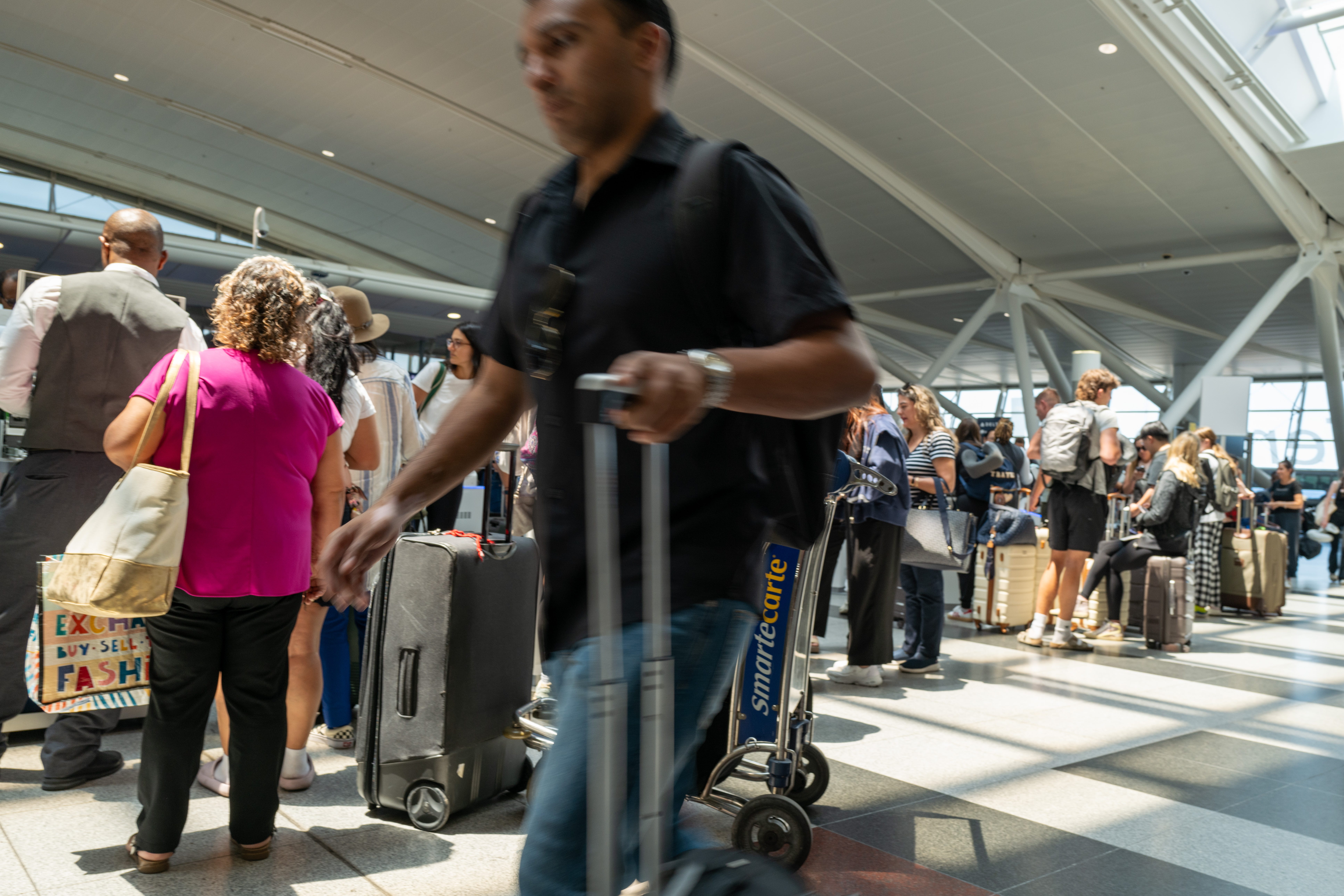Everyone Agreed The Deadly Dc Air Crash Was Preventable: 5 Takeaways From Senate Hearing
- A Jan. 29 collision between an Army helicopter and a regional jet over the Potomac River killed 67 people.
- Senators and aviation officials agree that the crash was preventable.
- The FAA is implementing new technology to analyze data and identify alarming trends in air traffic.
WASHINGTON — The Senate Commerce Committee's subcommittee on aviation, space and innovation held a hearing Thursday about the collision between an Army Black Hawk helicopter and an American Airlines regional jet over the Potomac River on Jan. 29 that killed 67 people.
Senators on both sides of the aisle seemed to agree that the accident would have been preventable if the appropriate precautions had been taken and if more stringent regulations were in place.
Although the National Transportation Safety Board's investigation into the incident is ongoing, its preliminary report suggested that thousands of close calls occurred in the same area near Ronald Reagan Washington National Airport between 2021 and 2024. The Federal Aviation Administration moved to permanently restrict helicopter traffic near the airport's runways, but senators said that Congress still has a role to play in responding to the incident.
Dailey Crafton, the brother of Casey Crafton, who died in the crash, said in an interview before the hearing that he wants officials to address the dangerously congested skies near Reagan National Airport and find out why the airspace wasn’t restricted sooner.
“There’s been so many near misses, and it took this crash for anyone to wake up and do anything about it,” he told USA TODAY.
The hearing revealed numerous areas the government is planning improvements for aviation safety and other areas where it's falling short of its goals. Here are five key takeaways from Thursday's testimony.
From the start, most people in the room seemed to agree that the warning signs were there to indicate that this tragedy could have happened.
"Alarm bells about potential collisions have been ringing for years," Sen. Tammy Duckworth, D-Ill., said in her opening statement. Duckworth is the ranking member of the subcommittee that held the hearing Thursday. "The warnings have been clear.”
She and other senators called on National Transportation Safety Board Chair Jennifer Homendy, Acting Federal Aviation Administration Administrator Chirs Rocheleau, and the director of Army Aviation, Brigadier General Matthew Braman, to address areas in the aviation safety net where conflicts between air traffic can be missed.
One of the key sticking points during the hearing had to do with a transmission system, known as ADS-B, on many aircraft that broadcast its position, direction, speed and other flight data. Notably, this system updates every second, whereas radars update every 4 seconds; time that's crucial in a situation where aircraft are so close.
Most Army helicopter flights in the Washington, D.C., area did not transmit ADS-B data, and many commercial aircraft are only equipped to transmit data about their own flights, not to receive data from other aircraft, according to senators.
Homendy noted that the helicopter involved in the accident had not transmitted any ADS-B data at all, on any flight, in at least 730 days. "We are still looking at installation, programming and equipment malfunctioning," she said.
Sen. Ted Cruz, R-Texas, chair of the full Senate Commerce Committee, said in his opening statement that he was "at a loss" as to why Army policy stated that ADS-B transmissions were not to be used, even on routine flights.
Rocheleau, the acting FAA administrator, said that the agency would require ADS-B broadcasts from all flights in the Washington Airspace starting today. He also emphasized that the helicopter corridor near DCA remains closed to almost all traffic.
Tim Lilley, the father of Sam Lilley, the first officer aboard the Black Hawk helicopter, said he’s heartened by legislator’s focus on the collision and improving aviation safety, but he is “disappointed” with the Army.
“There's things that could’ve been done in the last two months that still need to get done,” he said.
Tim Lilley spent 20 years flying Black Hawk helicopters for the Army and has flown the congested routes near Reagan National Airport.
Looking forward, he said he believes change will come.
“This has been the hardest two months of my life,” he said. “But we’re going to ensure that no other family has to go through what we’ve had to go through.”
Several of the committee members asked why the FAA did not limit the airspace around the airport sooner, citing the NTSB’s preliminary report detailing thousands of close calls in recent years.“I’m very concerned about what we’ve learned,” Rochereau said. “Clearly something was missed.”Rochereau said that while the FAA investigates all near misses, it has lacked the ability to comb through tens of millions of data points and identify alarming trends.To address the issue, the agency has recently implemented new technology, including artificial intelligence, Rochereau said.
Homedy said after the hearing she is “not confident” the FAA’s new artificial intelligence efforts will be able to mitigate the possibility of a future collision.
“I’m not confident,” she said. “We’ll see.”
In addition to the airspace at Reagan National Airport, the agency is analyzing data from 10 “hotspots” across the country, where there’s increased risk of a collision between helicopters and commercial traffic.“We have to do better,” Rochereau said.
After the hearing Dailey Crafton said he was not satisfied with the responses from the FAA and the Army but realizes that investigations are still ongoing.
“It’s preliminary so there’s a lot more that’s going to come from this,” he said, adding that he’s most pleased with the NTSB. “They’re doing a bang up job.”
He said he is in “disbelief” that close calls were so prevalent at Reagan National Airport.
“I’m glad something is being done about it now,” he said, “but it’s too little too late for those of us who had family members on that plane.”
Senators also expressed concern that there is a backlog in medical clearances, which is preventing air traffic controllers from returning to work or starting in tower positions after being hired. Rocheleau acknowledged the issue and said he would explore possible steps to address it.
The National Association of Air Traffic Controllers, the union that represents tower employees, did not immediately respond to a request for comment. The FAA was also unable to immediately provide a comment.
NTSB chair Homendy said the agency expects to issue its final report on the accident within a year, "barring unforeseen circumstances."
That said, she promised a thorough investigation into the crash. "The NTSB is the gold standard for accident investigations for a reason. We are thorough, we are fact based. We leave no stone unturned and we let the facts guide us.”
In the meantime, the agency will continue to issue immediate safety recommendations, as it did regarding the mixed-use airspace around DCA soon after the crash, as it finds urgent issues that need to be addressed.
(This story was updated to add new information.)


